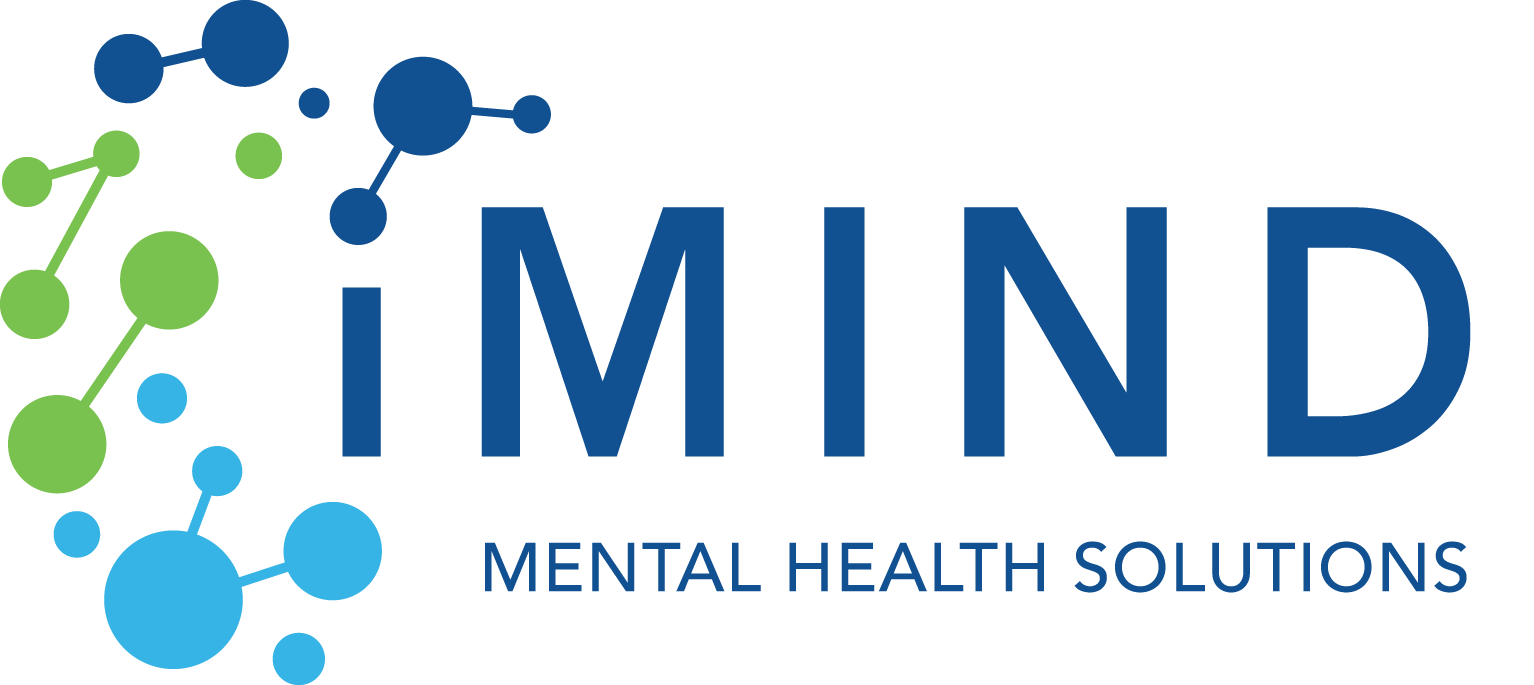Psychology of Dreams: What They Tell You About Your Mental Health
Published By Justin Baksh, LMHC, MCAP
November 24, 2023

Dreams have always fascinated us. Throughout history, they have captivated the human imagination, with early beliefs considering them messages from deities or tools for predicting the future. In modern times, dreams have drawn the attention of psychologists, neurologists, philosophers, and biologists, all striving to decipher their meanings and purposes.
The interpretation and meaning of dreams have been subjects of debate among these scientists for years. While Freud believed dreams offered insight into the unconscious mind, modern researchers hold diverse views. Some even suggest that dreams might be a side effect of brain processes like memory consolidation, with little to no intrinsic meaning beyond that. Dreams can be helpful tools for understanding our subconscious.
The Nature of Dreams
Although we can dream during any stage of sleep, dreams occurring during the REM (Rapid Eye Movement) stage are a fascinating and complex phenomenon. It takes from 10 to 60 minutes of sleep to reach this stage, which is characterized by rapid and random movement of the eyes, and where people commonly experience their most vivid and memorable dreams. There is a lot going on during this stage of sleep.
Characteristics of REM Sleep

High Brain Activity
During REM sleep, there is an increase in brain activity that resembles the activity during wakefulness. This heightened brain function is believed to be responsible for the vivid nature of dreams experienced during this phase.

Vivid Imagery and Emotions
Dreams in REM sleep are often remembered for their clear, intricate imagery and intense emotions. They can range from pleasant and exciting to bizarre and sometimes terrifying.

Physical Movement
Despite the muscles being in a state of temporary paralysis during REM sleep to prevent acting out dreams, the eyes move rapidly. These eye movements are thought to correspond with the dream content, although the exact relationship remains a subject of research.

Narrative Structure
REM dreams often have a narrative structure, playing out like stories. These dream narratives often blend elements from everyday life, like familiar people and places, with fantastical or surreal components that defy real-world possibilities.

Memory Consolidation
There is a belief among researchers that REM dreaming plays a role in memory consolidation. This involves processing and organizing memories from the day, aiding in learning and emotional regulation.

Recurring and Lucid Dreams
REM sleep is also the stage where recurring dreams and lucid dreams – where the dreamer is aware they are dreaming and may have some control over the dream – are most likely to occur.
What is Lucid Dreaming?
Lucid dreaming is a unique and intriguing phenomenon where the dreamer realizes that they are dreaming during the dream itself. This awareness distinguishes lucid dreaming from typical dreaming experiences. It can occur spontaneously or can be a result of deliberate practice and intention.
Once aware they are dreaming, lucid dreamers may gain some degree of control over their dream environment, characters, narrative, and even their own actions within the dream. The level of control can vary greatly from slight influence to almost complete manipulation of the dream scenario.
While most people are likely to experience lucid dreaming at least once in their lives, it is a more common occurrence for some than for others. A small percentage of people report experiencing lucid dreams regularly.
Lucid dreaming is often explored for various purposes, including psychological therapy, problem-solving, creative inspiration, and personal enjoyment. It’s also a topic of interest in both psychological studies and popular culture.
Freud’s Perspective on Dream Interpretation
Sigmund Freud, the famed Austrian neurologist and the founder of psychoanalysis, had a profound influence on the field of dream interpretation. His historical perspective on this subject is primarily outlined in his seminal work, The Interpretation of Dreams, published in 1899.
Freud believed that dreams were a direct pathway to understanding the unconscious mind. He theorized that dreams allowed for the expression of repressed desires and thoughts that were not accessible in the waking state.
In his theory of dream interpretation, Freud introduced the concepts of manifest and latent content to describe two distinct layers of meaning in dreams.
Manifest content refers to the literal storyline or imagery of the dream – essentially, what the dream appears to be about on the surface. It’s the tangible, visible part of the dream that the dreamer remembers upon waking. Manifest content can include specific scenes, characters, and actions that occur in the dream. Freud viewed this content as a symbolic, often distorted version of the true underlying message of the dream.
Latent content represents the hidden psychological significance of the dream. It’s the underlying thoughts, desires, and emotions that are not immediately apparent in the dream but are believed to drive the dream’s narrative. Freud believed that latent content often stems from unconscious wishes, fears, or unresolved conflicts that are too threatening or intense to be confronted directly. Thus, they are expressed in the dream in a disguised form.
Freud also theorized that during dreaming, the mind engages in a process to convert latent content into manifest content, often using symbolism and other mechanisms to disguise the true nature of the underlying thoughts and emotions. This transformation allows the dreamer to engage with these unconscious aspects in a more palatable or less distressing form.
Dreams as a Tools for Understanding
Freud saw dream interpretation as a valuable tool in psychoanalysis for uncovering the underlying issues and conflicts in a person’s psyche. He believed that understanding one’s dreams could provide insights into their unconscious mind, thus aiding in the therapeutic process.
Freud’s theories on dreams have been influential in shaping the early understanding of dream analysis, although many of his ideas have been debated and revised with the advancement of psychological and neuroscientific research. Nonetheless, his work laid the groundwork for the psychological interpretation of dreams, emphasizing their significance in understanding the human psyche.
Modern Dream Theory
Modern understanding of dreams has evolved significantly beyond Freud’s theories, incorporating insights from neuroscience, psychology, and cognitive science. While Freud focused on dreams as a pathway to the unconscious mind, contemporary research offers a more varied and complex view.
Advances in neuroscience have shown that dreams are linked with brain activity during sleep. Research using brain imaging techniques has illuminated how different brain regions are involved in dreaming. This perspective views dreams as a result of brain activity rather than primarily symbolic expressions of unconscious desires.
Many modern theories suggest that one of the functions of dreams is to help in memory consolidation. Dreams might play a role in processing and organizing memories, integrating new information with existing knowledge. There’s also a belief that dreaming can aid in problem-solving, because the mind can work through complex issues in a unique, unconstrained way that isn’t possible when we’re awake.
Some theories propose that dreaming is a way to process emotions, particularly those that are not fully addressed during waking hours. This can involve working through difficult or traumatic experiences, contributing to emotional healing and psychological well-being.
Modern understanding often emphasizes that dreams might not serve a single universal purpose but could have multiple functions that vary across individuals and contexts. This view acknowledges the complexity of the human mind and the many factors that can influence dreaming.
Contemporary research also recognizes the influence of cultural and individual differences in how dreams are experienced and interpreted. Unlike Freud’s universal approach, this perspective appreciates that dream content and significance can vary widely among different people and cultures.
Dreams and Mental Health
Dreaming is not just a passive experience but an active process where the brain engages in crucial tasks of sorting and making sense of experiences and emotions. This process is fundamental to maintaining both cognitive and emotional health. Dreams play a significant role in both memory consolidation and mood regulation, two vital psychological processes.
Memory Consolidation
During sleep, and particularly in the dreaming phase, the brain is believed to process, sort, and store memories from the day. Dreams may help in reorganizing and integrating new information with existing memories, enhancing overall learning and memory retention.
This consolidation process is crucial for long-term memory formation, allowing for the retention of important information and the discarding of unnecessary details.
Mood Regulation
Dreams can also contribute to emotional processing and mood regulation. They provide a psychological space where emotions and experiences, especially those not fully processed during waking hours, can be safely explored and worked through. This processing can lead to a better understanding and resolution of emotional issues, contributing to emotional stability and well-being. Dreaming might also help in diffusing emotional intensity, allowing individuals to wake up with a more balanced mood, even after a day of emotional turmoil.
The Link Between Lucid Dreaming and Psychological Health
Studies have shown that there may be a correlation between the intensity of lucid dreaming experiences and a person’s psychological well-being. For instance, one study found that individuals who experienced high-intensity lucid dreams (characterized by strong control, confidence, and vividness) reported lower levels of psychological distress, including reduced symptoms of depression, anxiety, and stress, compared to those with low-intensity lucid dream.
Quality Matters
The quality or intensity of lucid dreams appears to be a significant factor. High-intensity lucid dreamers experience more vivid and controlled dream states, which seems to correlate with better mental health outcomes.
However, it’s important to note that the research did not find a significant difference in psychological well-being between high-intensity lucid dreamers and non-lucid dreamers, indicating that the benefits might specifically relate to the quality of the lucid dreaming experience.
Warning Against Inducing Lucid Dreams
While these findings are intriguing, the researchers caution against actively inducing lucid dream states to improve mental health. The use of techniques to deliberately induce lucid dreams, such as lucid dreaming treatment (LDT), has been linked to sleep disturbances and schizotypy symptoms, suggesting potential adverse effects.
It’s important to note that this association does not imply that inducing lucid dreams causes schizotypal traits or disorders.
Rather, there might be a correlation where individuals prone to frequent nightmares can disrupt sleep patterns, leading to insomnia or a fear of going to sleep. Poor sleep quality can, in turn, affect overall mental and physical health. Sleep disturbances from nightmares can lead to a decrease in daytime functioning, increased irritability, and a heightened risk for other mental health issues .are more likely to engage in lucid dream induction or be affected by it.
The nature of this relationship is still not fully understood and warrants further research. It highlights the need for caution when engaging in practices to manipulate one’s dream experiences, especially for individuals who may have predispositions to certain psychological traits or conditions.
Nightmares and Mental Health
Nightmares, which are distressing and vividly realistic dreams, can have a significant impact on mental health, particularly in relation to conditions like anxiety, stress, and Post- Traumatic Stress Disorder (PTSD).
Anxiety and Stress
Nightmares often feature content that induces fear, anxiety, or distress. They can exacerbate existing anxiety and stress, leading to a deeper state of emotional distress. Individuals with anxiety disorders often experience more frequent and intense nightmares. The content of these nightmares may reflect the The disruption of sleep caused by nightmares can also contribute to daytime stress and anxiety, creating a cycle where anxiety leads to nightmares, which in turn increase anxiety levels.
Post-Traumatic Stress Disorder (PTSD)
Nightmares are a common symptom of PTSD. They often involve reliving the traumatic event or experiencing related themes. These nightmares can be particularly distressing and realistic, significantly impacting the quality of sleep and overall mental health of the individual. The persistent nature of PTSD-related nightmares can contribute to a fear of going to sleep, further exacerbating sleep disturbances and negatively impacting recovery from trauma.
Treating Nightmares
Frequent nightmares can disrupt sleep patterns, leading to insomnia or a fear of going to sleep. Poor sleep quality can, in turn, affect overall mental and physical health. Sleep disturbances from nightmares can lead to a decrease in daytime functioning, increased irritability, and a heightened risk for other mental health issues.
That’s why addressing nightmares is often a critical part of treating underlying mental health conditions. Techniques like imagery rehearsal therapy, where individuals reimagine the nightmare with a positive outcome, have been used effectively, particularly for PTSD-related nightmares. Cognitive-behavioral therapy (CBT) and certain medications can also be helpful in lessening how often someone with an anxiety disorder has nightmares, and reducing their intensity.
Dreams, Psychotherapy and Mental Health
Understanding dreams can be a valuable tool in psychotherapy and mental health treatment. It offers a unique window into the unconscious mind, provides a means for emotional processing and symbolic interpretation, and can enhance therapeutic communication and treatment strategies.

A Peek into the Unconscious
Dreams often reflect unconscious thoughts, feelings, and desires. In psychotherapy, exploring the content of dreams can provide insights into aspects of a client’s psyche that are not readily accessible or consciously acknowledged during waking life. This can help in understanding underlying psychological conflicts, unresolved issues, or repressed emotions.

Symbolic Interpretation and Analysis
The symbolic nature of dreams offers a rich ground for interpretation. Therapists may work with clients to decode these symbols, helping them to understand the deeper meanings and emotional undercurrents in their dreams. This process can uncover important insights about personal struggles, fears, and desires.

Emotional Processing and Resolution
Dreams can serve as a natural form of emotional processing. Discussing and analyzing dreams in therapy can help clients work through complex emotions, traumas, or anxiety, providing a pathway for emotional healing and resolution.

Therapeutic Relationship and Communication
Sharing and discussing dreams can enhance the therapeutic relationship, fostering deeper communication and trust. It allows the therapist to gain a more holistic understanding of the client’s internal world.

Behavioral and Cognitive Insights
Dreams can reflect a person’s behavioral patterns, cognitive distortions, and coping mechanisms. Understanding these aspects through dream analysis can inform therapeutic strategies in cognitive-behavioral therapy (CBT) and other treatment modalities.

Treatment of Sleep Disorders
For conditions like nightmares and PTSD, where disturbing dreams are a central feature, dream interpretation and related techniques (like imagery rehearsal therapy) can be directly beneficial in reducing the frequency and intensity of nightmares, thereby improving overall sleep quality and mental health.
Managing Your Dream Experiences
The use of dream diaries and awareness practices is a beneficial approach in managing and understanding dream experiences, often used both therapeutically and for personal insight.
Dream Diaries
Keeping a dream diary involves recording dreams upon waking. This practice helps to save the details of dreams while they are still fresh in memory. Writing down dreams can aid in recognizing recurring symbols, themes and patterns over time. This can provide insights into one’s subconscious concerns, desires, and emotional states. Dream diaries also help in increasing dream recall, making it easier for people to remember their dreams clearly and more often.
Awareness Practices
Awareness practices, such as mindfulness and reality checks, are often used to increase one’s awareness both during waking hours and within dreams. These practices can lead to lucid dreaming. Facilitated by awareness practices, lucid dreaming can be used for personal exploration, problem-solving, overcoming fears, and creative inspiration.
Therapeutic Application
In therapy, dream diaries and awareness practices can be used to facilitate discussions about dream content, providing a platform for emotional processing and exploration of unconscious material. These practices can also be part of treatments for conditions like PTSD and nightmares, where gaining awareness and control over dream content can help reduce the distress associated with such dreams.
Starting Your Own Dream Diary
Would you like to engage more deeply with your dreams? Here is a set of questions to get you started in dream journaling.
Dream Diary Questions
- Recall and Detailing: What was the main theme of your dream? Can you describe the setting and the people or characters in your dream? Were there any prominent colors, objects, or symbols?
- Emotional Response: How did you feel during the dream? Did the dream evoke any strong emotions, like joy, fear, or sadness? Did your emotions change throughout the dream?
- Narrative and Events: What events or actions occurred in your dream? Was there a sequence or progression to these events? Did you face any challenges or obstacles in the dream?
- Personal Connection: Do any elements of the dream relate to your waking life or recent experiences? Are there recurring themes or symbols in your dreams that you’ve noticed before? Does the dream remind you of any past experiences or people in your life?
- Reflection and Interpretation: What do you think the dream might mean? Is there a message or insight that you can take from the dream? How does reflecting on this dream make you feel now?
- Action and Resolution: Is there any action you feel inspired to take after having this dream? Are there unresolved feelings or thoughts brought up by the dream that you want to explore further? If you could change or revisit any part of the dream, what would it be and why?
Regularly reflecting on these questions can deepen your understanding of your dream experiences and how these dreams relate to your emotions, thoughts, and daily life.
The Bottom Line
While we have made significant strides in understanding dreams’ nature and function, much remains to be discovered. Paying attention to your dreams can offer profound insights into your subconscious, enhancing self-awareness and understanding. For those grappling with sleep disturbances or anxiety disorders, recognizing the impact of these issues is crucial.
Seeking professional treatment can improve sleep quality, alleviate anxiety, and bring a healthier balance to both your dream and waking life. Remember, your dreams are not just fleeting shadows of the night; they are windows into the deeper aspects of your mind, offering valuable guidance on your journey toward psychological well-being.
- Aviram, L., & Soffer-Dudek, N. (2018). Lucid Dreaming: Intensity, But Not Frequency, Is Inversely Related to Psychopathology. Frontiers in Psychology, 9.
- Caviglia, G. (2021). Working on dreams, from neuroscience to psychotherapy. Research in Psychotherapy: Psychopathology, Process and Outcome, 24(2).
- Martin, J. M., Andriano, D. W., Mota, N. B., Mota-Rolim, S. A., Araújo, J. F., Solms, M., & Ribeiro, S. (2020). Structural differences between REM and non-REM dream reports assessed by graph analysis. PLOS ONE, 15(7), e0228903






